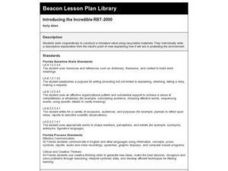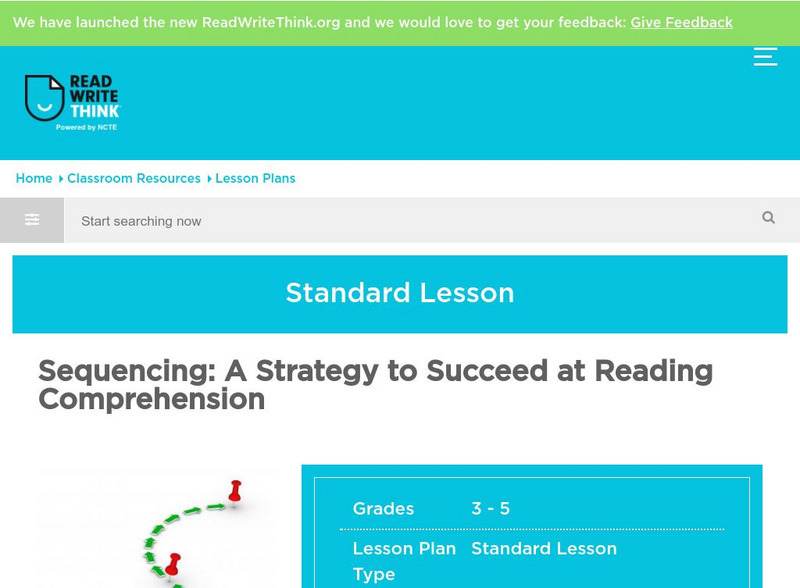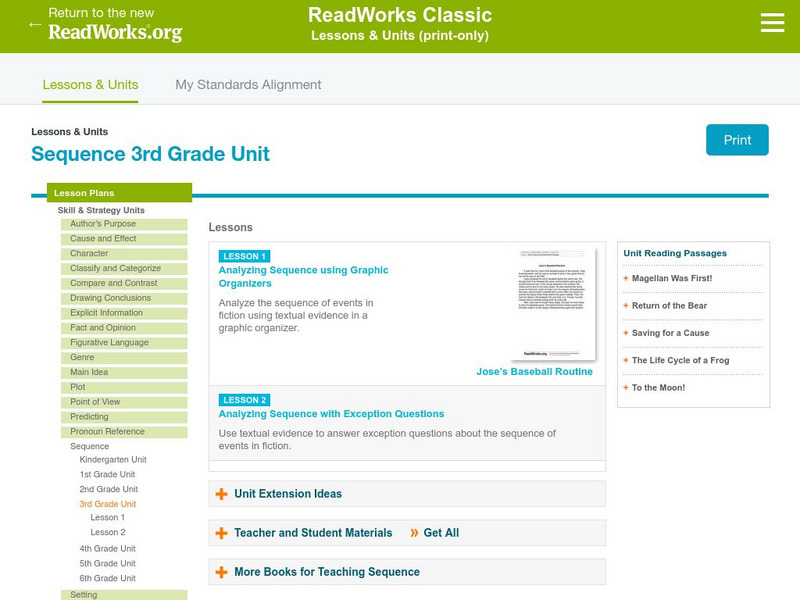Curated OER
The Legend of Sleepy Hollow
Students research the American Revolution through the story of the Legend of Sleepy Hollow. In this American Revolution lesson, students research folktale and The Legend of Sleepy Hollow. Students view illustrations for the story....
Curated OER
Comparing Time Periods in U.S. History: The Ashford Project
Fifth graders use a "fact book" comparing periods in American history then students create a picture to illustrate their assigned periods. # # students use their pictures and concept maps to write expository paragraphs about their...
Curated OER
How Do I Get There From Here?
Sixth graders use a school map to create a charted course and a corresponding written description of the directions for travel from class to class, beginning with an arrival location in the morning and ending with a departure location in...
Curated OER
Quest for Gold
Students identify people involved in the Olympics in the past and explain how their ideas and actions have changed others' lives. they take notes during research and present the information in written or picture format.
Curated OER
The Impact of AIDS in Africa and its Effect on the United States
Eleventh graders explain the social devastation visited on seven nations of sub-Saharan Africa by the AIDS pandemic, with particular emphasis on the damage to educational systems, women, and Students.
Curated OER
Sarah, Plain and Tall
Third graders experience what life was like during era in which "Sarah, Plain and Tall depicts using modern technology.
Curated OER
The Study of the Spanish-Speaking People of Texas: Understanding Primary Sources
Students analyze Russell Lee's photo essay as a sign of segregation in Texas. They consider the differences between primary and secondary sources and how historians use these sources.
Curated OER
Visiting Grandma
First graders investigate the aspect of time, including days of the week using a calendar. They use problem solving strategies and a monthly calendar to find a solution to the problem.
Curated OER
The Basketball Tournament
Young scholars estimate how many games are played if six teams play each other once. They investigate their own way and discuss possible strategies they might use. They then share their findings with the class.
Curated OER
What Makes Good Literary Writing?
Students conduct a literature study of John Steinbeck's classic "Of Mice And Men". They write in reflection of the author's influence upon 20th century literature. Students take apart the story to focus class discussion upon major themes...
Curated OER
Narrative Therapy
Fourth graders demonstrate improved usage of story telling/conversational skills.
Curated OER
Merry Easter
Fourth graders create greeting cards to special persons for a special holiday.
Curated OER
The AIDS/HIV Pandemic in Sub-Saharan Africa
Young scholars become aware of the level of the impact on the current and future socio-economic structures of sub-Saharan Africa by the AIDS pandemic.
Curated OER
Second Graders Create Their Own Social Studies Book (Part I, The 5Ws of the Constitution)
Students study the United States Constitution and create a year-long cumulative activity for social studies. In this social studies lesson, students complete activities throughout the year to learn the 5Ws for the United States...
Curated OER
Resources of the Three Little Pigs
Second graders, after listening to the The Three Little Pigs, identify the natural, human, and capital resources involved in creating each house.
Curated OER
Introducing the Incredible RBT-2000
Fourth graders construct a miniature robot using recyclable materials. They write a descriptive explanation from the robot's point of view explaining how it aid in protecting the environment.
Curated OER
Adventures along the Oregon Trail in Nebraska
Pupils discover how the land and people we develop relationships with in Nebraska affect our survival--past, present, and future. They write about and interview their grandparents, parents and peers and compare them with people on the...
Curated OER
Stretch to the Math Tables
Students count by multiples while performing stretches or exercises. They listen to music and skip count by a given multiple. The rhythm of the music as well as the repitition assists them in their memorization of multiplication facts.
Curated OER
Why Walk?
First graders listen to the book Yummers. They use the food pyramid to evaluate what Emily Pig ate during her walk and find out why her walk made her sick. They participate in a walking game.
ReadWriteThink
Read Write Think: Sequence of Events Chart
A printable graphic organizer to help students sequence events and recognize cause and effect relationships within a story. Directions on how to use this graphic organizer as well as lists of teaching ideas and related resources are also...
ReadWriteThink
Read Write Think: Sequencing a Strategy to Succeed at Reading Comprehension
Contains plans for lessons that use the story of Paul Bunyan to teach about sequencing and order of events. In addition to objectives and standards, this instructional plan contains links to sites used in the lessons as well as...
Read Works
Read Works: Sequence 3rd Grade Unit
[Free Registration/Login Required] This website provides a series of two lesson plans designed to teach students to create a graphic organizer showing the sequence of events in a fiction text. The lessons include ideas for direct...
Alabama Learning Exchange
Alex: Identifying Sequence of Events Using Dr. Seuss
After listening to a reading of Dr. Seuss' Bartholomew and the Oobleck, students use graphic organizers and comic strips to practice sequencing. In a fun activity, small groups follow directions to make oobleck.
Read Works
Read Works: Sequence 2nd Grade Unit: Flashback Sequence
[Free Registration/Login Required] This lesson plan helps learners identify the sequence of events in a story with flashback. The lesson includes ideas for direct teaching, guided practice, and independent practice and utilizes the book...

























